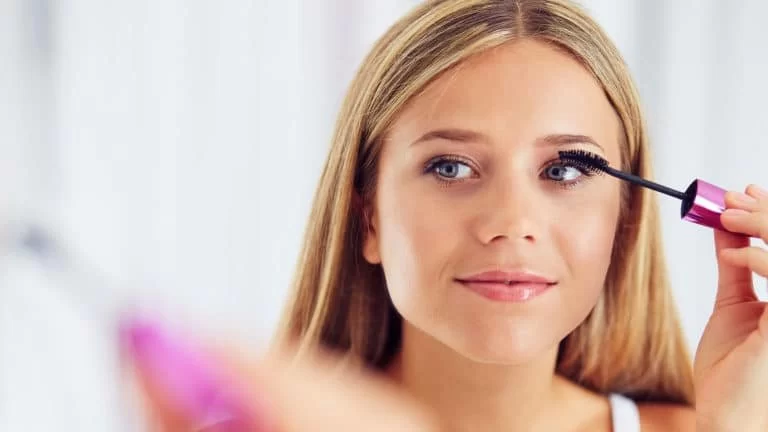
- why-knowing-how-to-safely-remove-makeup-near-the-eyes-matters
- choosing-eye-safe-makeup-removal-products
- step-by-step-guide-on-how-to-safely-remove-eye-makeup
- common-mistakes-to-avoid-when-removing-eye-makeup
- sensitive-eyes-allergies-and-special-conditions
- real-experiences-from-daily-makeup-users
- how-eye-docs-helps-you-care-for-your-eyes
1. Why Knowing How to Safely Remove Makeup Near the Eyes Matters
The eyes are among the most sensitive and vulnerable parts of the face. Whether you're wearing mascara, eyeliner, or eyeshadow, knowing how to safely remove makeup near the eyes is critical for maintaining both eye health and skin integrity. Improper removal can lead to irritation, clogged tear ducts, infections, and even long-term damage.
Every year, ophthalmologists see countless cases of corneal abrasions, conjunctivitis, and lid dermatitis—all due to rushed or improper eye makeup removal. The good news? With the right tools and approach, you can keep your eyes clean and comfortable without compromising beauty or safety.
2. Choosing Eye-Safe Makeup Removal Products
2.1 Micellar Water vs. Oil-Based Removers
Micellar water is gentle and effective for light makeup, while oil-based removers are better suited for waterproof mascara or heavy eyeliner. If you’re unsure, try both and see which leaves your eyes feeling fresh without residue or redness.
2.2 Fragrance-Free and Ophthalmologist-Tested Formulas
Always opt for fragrance-free removers and those labeled “safe for sensitive eyes” or “ophthalmologist-tested.” These are less likely to trigger reactions or disrupt your tear film.
2.3 Reusable Pads and Hypoallergenic Cotton
The material you use is just as important. Soft, reusable cloths or premium hypoallergenic cotton pads are less abrasive than tissues or synthetic wipes, which can scratch or tug delicate skin.
3. Step-by-Step Guide on How to Safely Remove Eye Makeup
3.1 Step 1: Wash Your Hands First
Clean hands prevent the transfer of bacteria to your eye area. This simple habit reduces the risk of infection dramatically.
3.2 Step 2: Saturate a Cotton Pad (Don’t Rub!)
Apply your remover to the pad and gently press it over the closed eye for 10–15 seconds. Let the product break down the makeup without scrubbing. This step is especially crucial when dealing with waterproof products.
3.3 Step 3: Gently Swipe in a Downward Motion
Wipe downward and outward to follow the natural grain of your lashes and lid. Use separate pads for each eye to avoid cross-contamination, and always use a fresh one for a second pass if needed.
3.4 Step 4: Rinse and Moisturize
Once your eye area is clean, splash with lukewarm water and pat dry. Apply a lightweight, fragrance-free eye cream to soothe the skin and prevent dryness or irritation.
4. Common Mistakes to Avoid When Removing Eye Makeup
4.1 Scrubbing Too Hard
Rubbing vigorously can damage capillaries, stretch delicate skin, and irritate the eye itself. Always be gentle—it’s about dissolving makeup, not scrubbing it off.
4.2 Using Expired or Inappropriate Products
Avoid expired removers, and never use general facial cleansers for eye makeup. They often contain surfactants or alcohols that are too harsh for the eye area.
4.3 Skipping Aftercare
Neglecting to rehydrate the eye area can lead to dryness, redness, and fine lines. A good eye moisturizer should be the final step in your nighttime routine.
5. Sensitive Eyes, Allergies, and Special Conditions
5.1 Dealing with Eye Allergies
If you’re prone to seasonal allergies or wear contact lenses, removing makeup safely is even more critical. Use hypoallergenic products and rinse your eyes with sterile saline before and after removal for added protection.
5.2 Post-Surgical or Medicated Eyes
After procedures like LASIK or when using medicated drops, consult your ophthalmologist before using any remover. You may need to avoid certain ingredients or methods temporarily.
5.3 When to Seek Medical Help
Persistent redness, blurred vision, or a burning sensation after makeup removal should never be ignored. Visit an eye care professional immediately. Eye Docs offers consultations to address these concerns with expert guidance.
6. Real Experiences from Daily Makeup Users
6.1 Monica’s Nightly Routine
As a makeup artist, Monica wears heavy eyeliner daily. She swears by a two-step removal process: an oil-based remover followed by a micellar water rinse. “My eyes used to sting every night until I figured out the right combo,” she shares.
6.2 Jake’s First-Time Lesson
Jake, a performer who started wearing stage makeup, once used regular soap to remove eyeliner and ended up with painful conjunctivitis. After a visit to Eye Docs, he switched to a lid-safe cleanser and hasn’t had issues since.
6.3 Quiet Time Ritual: Emma’s Story
Emma describes her eye makeup removal process as her “unwind moment.” She uses chamomile-infused pads and soft music to turn it into a calming nightly ritual. “It’s self-care, not just skincare,” she says.
7. How Eye Docs Helps You Care for Your Eyes
7.1 Expert-Recommended Eye Care Solutions
At Eye Docs, we specialize in curated products that balance efficacy with safety. Our selection includes eye-safe removers, sterile wipes, and treatments for irritation or dryness.
7.2 Personalized Consultations
We understand that no two eyes are the same. Whether you wear heavy makeup daily or only occasionally, our professionals provide tailored advice for your routine.
7.3 A Trusted Guide for Long-Term Eye Wellness
More than a store, Eye Docs is a support system for your eye health. From products to professional care, we help you maintain bright, comfortable eyes—no matter your lifestyle.








